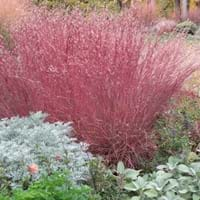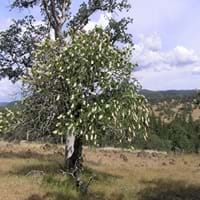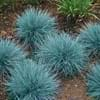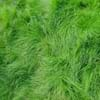Life Span
Annual
Perennial
Origin
North America, United States, Northeastern United States, Mid-Atlantic United States, Southeastern United States, North-Central United States, Central United States, South-Central United States, Southwestern United States, Mexico
California
Types
Greener Pastures
Not Available
Habitat
Grassland
Hillside
USDA Hardiness Zone
4-9
7-9
Sunset Zone
1a, 1b, 2a, 2b, 3a, 3b, 4, 5, 6, 7, 8, 9, 10, 11, 12, 13, 14, 15, 16, 17, 18, 19, 20, 21, 22, 23, 24
3a, 3b, 4, 5, 6, 7, 8, 9, 10, 14, 15, 16, 17, 18, 19, 20, 21, 22, 23, 24
Habit
Clump-Forming
Oval or Rounded
Flower Color
Purple
White, Pink
Flower Color Modifier
Bicolor
Bicolor
Fruit Color
Not Available
Yellow Brown
Leaf Color in Spring
Light Green
Light Green
Leaf Color in Summer
Light Green
Green
Leaf Color in Fall
Red, Purple
Not Available
Leaf Color in Winter
Tan
Not Available
Leaf Shape
Grass like
Oval
Plant Season
Summer, Fall, Winter
Spring, Summer, Fall, Winter
Sunlight
Full Sun, Partial Sun
Full Sun, Partial Sun
Type of Soil
Loam, Sand
Clay, Loam, Sand
The pH of Soil
Acidic, Neutral, Alkaline
Acidic, Neutral
Soil Drainage
Well drained
Well drained
Bloom Time
Late Summer, Early Fall
Late Spring, Early Summer
Tolerances
Drought
Drought, Salt
Where to Plant?
Ground
Ground
How to Plant?
Divison, Seedlings
Seedlings
Plant Maintenance
Medium
Medium
Watering Requirements
Medium
Keep the ground moist but not water-logged, Requires regular watering, Requires watering in the growing season
In Summer
Lots of watering
Lots of watering
In Spring
Moderate
Moderate
In Winter
Average Water
Average Water
Soil pH
Acidic, Neutral, Alkaline
Acidic, Neutral
Soil Type
Loam, Sand
Clay, Loam, Sand
Soil Drainage Capacity
Well drained
Well drained
Sun Exposure
Full Sun, Partial Sun
Full Sun, Partial Sun
Pruning
Remove damaged leaves, Remove dead branches, Remove dead leaves
Remove damaged leaves, Remove dead leaves, Remove dead or diseased plant parts
Fertilizers
All-Purpose Liquid Fertilizer
All-Purpose Liquid Fertilizer
Pests and Diseases
Red blotch
Red blotch
Plant Tolerance
Drought
Drought
Flower Petal Number
Single
Not Available
Foliage Texture
Fine
Medium
Foliage Sheen
Matte
Glossy
Attracts
Butterflies
Birds, Butterflies
Allergy
Not Available
Not Available
Aesthetic Uses
Showy Purposes
Beautification, Landscape Designing, Showy Purposes
Beauty Benefits
Not Available
Not Available
Environmental Uses
Air purification
Air purification
Medicinal Uses
Not Available
Not Available
Part of Plant Used
Leaves, Root
Fruits
Other Uses
Showy Purposes
Decoration Purposes, Showy Purposes, Used as Ornamental plant
Used As Indoor Plant
No
No
Used As Outdoor Plant
Yes
Yes
Garden Design
Cutflower, Dried Flower/Everlasting, Groundcover, Mixed Border, Rock Garden / Wall
Dried Flower, Everlasting, Feature Plant, Hedges, Mixed Border, Screening, Wind Break
Botanical Name
ERAGROSTIS spectabilis
AESCULUS californica
Common Name
Purple Lovegrass
California Buckeye
In Hindi
eragrostis spectabilis
कैलिफोर्निया Buckeye
In German
eragrostis spectabilis
California Buckeye
In French
eragrostis spectabilis
California Buckeye
In Spanish
Eragrostis spectabilis
California Buckeye
In Greek
eragrostis spectabilis
Καλιφόρνια Buckeye
In Portuguese
Eragrostis spectabilis
California Buckeye
In Polish
Eragrostis okazałe
Kalifornia Buckeye
In Latin
Eragrostis spectabilis
California Buckeye
Phylum
Magnoliophyta
Magnoliophyta
Class
Liliopsida
Magnoliopsida
Order
Cyperales
Sapindales
Family
Poaceae
Sapindaceae
Genus
Eragrostis
Aesculus
Clade
Angiosperms, Commelinids, Monocots
Angiosperms, Eudicots, Rosids
Tribe
Eragrostideae
Not Available
Subfamily
Chloridoideae
Hippocastanoideae
Number of Species
Not Available
Season and Care of Purple Lovegrass and California Buckeye
Season and care of Purple Lovegrass and California Buckeye is important to know. While considering everything about Purple Lovegrass and California Buckeye Care, growing season is an essential factor. Purple Lovegrass season is Summer, Fall and Winter and California Buckeye season is Summer, Fall and Winter. The type of soil for Purple Lovegrass is Loam, Sand and for California Buckeye is Clay, Loam, Sand while the PH of soil for Purple Lovegrass is Acidic, Neutral, Alkaline and for California Buckeye is Acidic, Neutral.
Purple Lovegrass and California Buckeye Physical Information
Purple Lovegrass and California Buckeye physical information is very important for comparison. Purple Lovegrass height is 45.70 cm and width 5.10 cm whereas California Buckeye height is 460.00 cm and width 460.00 cm. The color specification of Purple Lovegrass and California Buckeye are as follows:
Purple Lovegrass flower color: Purple
Purple Lovegrass leaf color: Light Green
California Buckeye flower color: White and Pink
- California Buckeye leaf color: Light Green
Care of Purple Lovegrass and California Buckeye
Care of Purple Lovegrass and California Buckeye include pruning, fertilizers, watering etc. Purple Lovegrass pruning is done Remove damaged leaves, Remove dead branches and Remove dead leaves and California Buckeye pruning is done Remove damaged leaves, Remove dead leaves and Remove dead or diseased plant parts. In summer Purple Lovegrass needs Lots of watering and in winter, it needs Average Water. Whereas, in summer California Buckeye needs Lots of watering and in winter, it needs Average Water.





